Comparative morphology of the genital apparatuses of butterflies of the genus Coenonympha of the family Satyridae of Yakutia
Автор: Pestryakova S.M., Petrov V.V., Davydova N.G.
Журнал: Международный журнал гуманитарных и естественных наук @intjournal
Рубрика: Биологические науки
Статья в выпуске: 12-5 (75), 2022 года.
Бесплатный доступ
In this work, the species features of the genital apparatuses of species of the genus Coenonympha of the family Satyridae of Yakutia were studied. The materials of 4 species of butterflies of the genus Coenonympha were summarized on the basis of the structure of the genital apparatus. As a result of a comparative analysis, the features of differences and external similarity of the species were revealed, which can later be used for more accurate identification of the Satyridae family of Yakutia, which is very difficult in terms of determining this genus. For a visual image of the processed material, objects were photographed from nature through a stereoscopic microscope using digital photographic equipment.
Butterflies, genital apparatus, females, males, genus coenonympha
Короткий адрес: https://sciup.org/170197146
IDR: 170197146 | DOI: 10.24412/2500-1000-2022-12-5-6-11
Текст научной статьи Comparative morphology of the genital apparatuses of butterflies of the genus Coenonympha of the family Satyridae of Yakutia
Relevance. Often, the species of this family have hard-to-distinguish external features and a wide variability in the size and color of the wings, even within the same study area. This creates great difficulties for species identification.
The aim of this work is to study the specific features of the genital apparatus of species of the genus Coenonympha of the family Sa-tyridae of Yakutia.
To achieve the goal, the following tasks were set:
-
- mastering the method of processing the genital apparatus of butterflies;
-
- comparative analysis of the morphology of the genital apparatus of the genus Coeno-nympha of the family Satyridae .
The novelty of the work . In this work, we summarized the materials and revised 4 species of butterflies of the genus Coenonympha of the family Satyridae based on the structure of the genital apparatus. As a result of the comparative analysis, the features of the differences and the external similarity of the species were revealed, which can later be used for more accurate identification of a genus that is very difficult in terms of definition.
For the fauna of the genus Coenonympha of the family Satyridae of Yakutia, according to the literature data, 4 species are described.
We were able to identify and process these species. The material used to carry out this work was selected from the collections of students and staff of the Department of Zoology of the BGF and, in part, provided by the Laboratory of Systematics and Ecology of Invertebrates of the Institute of Organisms of the Siberian Branch of the Russian Academy of Sciences.
A total of 83 specimens of butterflies of the genus Coenonympha of the Satyridae family were processed. In this paper, we present data on the structure of the genital apparatus of 4 females and 4 male species.
Genital apparatus processing technique
The great abundance of species creates difficulties in their classification for experts in the field of taxonomy of insects. This process has not yet been fully completed.
There are various methods for identifying butterflies: by external signs (i.e., by the pattern of wings, by veins), by genitalia and by a set of chromosomes. The most accurate and reliable method for determining the species affiliation of maceous Lepidoptera adults is the study of their genital apparatus [3, 6]. Most often, lepidopterologists use the method of identifying butterflies by external signs, but these signs are very variable due to vari- ous environmental conditions of habitats. In addition, this technique is complicated by the fact that some species of Lepidoptera are outwardly very similar and their identification is difficult. In connection with the above, the most accurate and reliable method for determining the species of club-bearing Lepidop-tera adults is the study of the genital apparatus. This method, along with external features, underlies the identification of butterfly species, gives a more accurate picture of their systematic position, and reveals specific morphological differences [4, 5].
The material was processed according to the generally accepted method. All predetermined specimens had their last abdominal segments cut off. Then they were placed in a 10% solution of caustic potassium (KOH) and boiled for 5-10 minutes, depending on the size of the butterfly. Digestion is carried out in order to destroy the outer chitinous cover.
After cleaning, the genital apparatus of each butterfly was determined to species. For preservation, the genital apparatuses were placed in a solution of glycerin and sugar syrup (1:1).
The processed materials were photographed through a binocular (with a magnification of 8x2, 8x4) with a SONY Cyber-shot 7.2 m.p. digital camera. in two projections.
Comparative morphology of the genital apparatuses of butterflies
Comparison of differences and morphological features of each species was made on the basis of the images taken.
The genus Coenonympha includes 4 species of butterflies. The length of the front wings is 13-20 mm. Upper wings pale buff to dark brown. At the root of the front wings, three veins are swollen. The underside of the hindwings without prominent veins and a marbled pattern.
-
1. Coenonympha hero (Linnaeus, 1761). Forage plants of the sennitsa gero are bluegrass (Roa), barley (Hordeum), sedge (Carex). Typical habitats are wet meadows, forest glades, floodplains of rivers and streams in deciduous and mixed forests. The number of this butterfly is declining in the European part of the USSR [2].
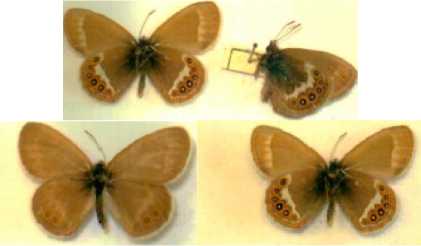
Fig. 1. Coenonympha hero (Linnaeus, 1761) - Hera's Sennitsa (author's photo)
-
2. Coenonympha amaryllis (Stoll, 1782). Sennitsa amaryllis is an inhabitant of meadows, mostly steppe. Caterpillar - on cereals (Roaseae).
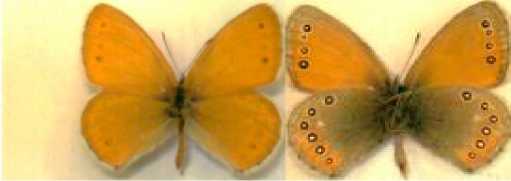
Fig. 4. Coenonympha amaryllis (Stoll, 1782) - Amaryllis Sennitsa (author's photo)
-
3. Coenonympha glycerion (Borkhausen, 1788). Meadow sennitsa lives in floodplain and valley meadows, alas, forest clearings, forest edges. The caterpillar feeds on cereals [10].
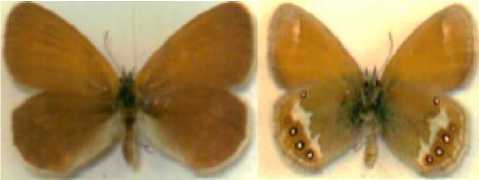
Fig. 7. Coenonympha glycerion (Borkhausen, 1788)
The length of the front wings is 14-18 mm. (Fig.1). The wings are dark brown or brown above, the front wing is one-color or with one (more often) - three eyes in an ocher rim, on the hind wing there are also two or three eyes. The ocelli are larger ventrally, more distinct, on the hind wing with wide rims and they partly touch, in front of the ocelli, a sinuous white stripe runs through the entire wing, the same is often expressed on the forewing, but it usually does not reach the anal vein [1].
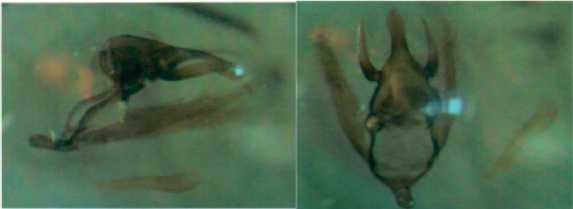
Fig. 2. Genitalia of a male Coenonympha hero (photo by the author)
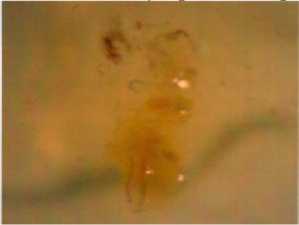
Fig. 3. Genitalia of a female Coenonympha hero (photo by the author)
Male genitalia (Fig. 2). Uncus and branches of gnathos are long. The uncus is curved inwards. Vinculum thin with small saccus. Valves are extended. Aedeagus short, caecum wider. Female genitalia (Fig. 3). The vaginal plate is pear-shaped. Ductus is short. Bursa is elongated, smooth with signum.
The length of the front wings is 14-18 mm. (Fig. 4). The wings are brownish-yellow above, on the front wing there is a black eye at the apex and two more or no eyes below. From below on the outer field of the wing there are always sighted eyes, on the forewing there are three or four of them, rarely one more or a small dot; the grayish hindwing usually has six ocelli, all of them on yellowish spots between the veins and light spots adjoining them on the inner side, and a lead strip runs along the outer edge of the wing [8].
Male genitalia (Fig. 5). Vinculum thin, more curved inwards. Saccus is small. The valva is elongated with a pointed end. Aedeagus short. Caecum in the form of a «heart». Female genitalia (Fig. 6). The vaginal plate is trapezoidal in shape. The ductus is very thin, barely visible. Bursa small, spherical with signum.
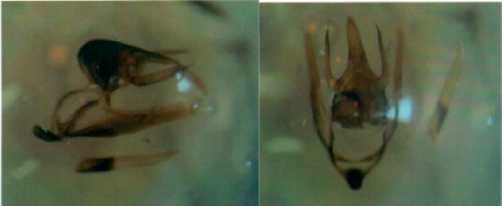
Fig. 5. Male genitalia of Coenonympha amaryllis (author's photo)
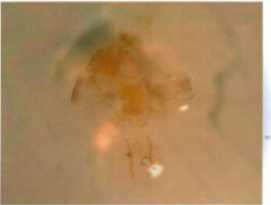
Fig. 6. Genitalia of a female Coenonympha amaryllis (photo by the author)
The length of the front wings is 14-18 mm. (Fig. 7). In contrast to amaryllis, the wings are darker, with 1–2 apical ocelli ventrally on the forewing [7].
Male genitalia (Fig. 8). Similar to C. amaryllis, but C. amaryllis has a more rounded tegumen than C. glycerion. The saccus is longer. Aedeagus short. Caecum oval. Female genitalia (Fig. 9). The vaginal plate is sclero-tized, so it is easily destroyed when digested. Ductus thin. Bursa pear-shaped, without signum.
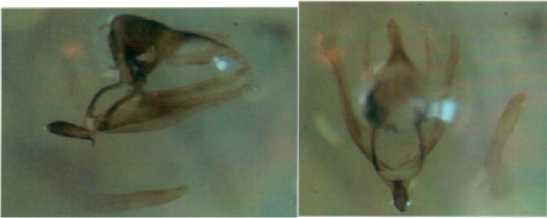
Fig. 11. Male genitalia of Coenonympha tullia (author's photo)
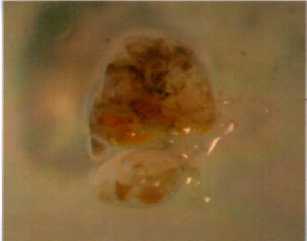
Fig. 12. Genitalia of a female Coenonympha tullia (photo by the author)
As a result of the data obtained, the following main structural features of the genital apparatus of butterflies of the genus Coenonym-pha of the family Satyridae of Yakutia were revealed:
-
1. The male genitalia are very diverse:
-
- the tegumen of C. amaryllis is more rounded than that of C. glycerion;
-
- uncus and branches of gnathos are elongated, well separated; in C. hero the uncus is bent inwards;
-
- the structure of the gnathos is always well differentiated, in C. tullia the branches of the gnathos are pointed, coming out from the side, therefore, when viewed from above, they form the appearance of a “forcep”;
-
- saccus is shorter than uncus;
-
- elongated valvae;
-
- edagus short or curved ( C. Tullia) .
-
2. The genitals of females are characterized by:
-
- diversity of the structure of the vaginal area: the genital plate of various shapes;
-
- Ductus is short and thin in all;
-
- bursa smooth, of various shapes, with or without signum in C. hero and C. amaryllis , in C. Glycerion and C. tullia .
Conclusion
As a result of this work, we processed 83 specimens of the genital apparatus of butterflies of the genus Coenonympha of the family
Satyridae of Yakutia. The processed materials were photographed through a binocular (with a magnification of 8x2, 8x4) with a SONY Cyber-shot 7.2 m.p. digital camera. in two projections. Comparison of differences and morphological features of each species was made on the basis of the images taken.
In general, butterflies of the genus Coeno-nympha of the family Satyridae are characterized by the presence of one, two, or three veins on the forewing, more or less sharply swollen at the base. Butterflies are medium in size. The color of the wings is dominated by ocher-yellow color tones. Coenonympha tul-lia has small ocelli, one at the apex of the forewing, or without them.
In the morphological comparison of the male genitalia, we noted a characteristic diversity. The tegumen of C. amaryllis is more rounded than that of C. glycerion . In Coeno-nympha glycerion is similar to C. amaryllis, but in C. amaryllis the tegumen is more rounded than in C. glycerion . The saccus is longer. Aedeagus short. Caecum oval. The genitalia of Coenonympha females is characterized by a variety of forms of the vaginal plate, the bursa is elongated, smooth, small spherical, with or without signums.
Thus, this information can later be used for more accurate identification of the family Sa-tyridae of Yakutia, which is very difficult in terms of identifying this genus Coenonympha.
Список литературы Comparative morphology of the genital apparatuses of butterflies of the genus Coenonympha of the family Satyridae of Yakutia
- Ammosov Yu.N. Lepidoptera - consumers of leaves of trees, shrubs and shrubs of Central and Southern Yakutia // Fauna and ecology of insects of Yakutia. - Yakutsk, 1972. - S. 20-29.
- Baranchikov Yu.N. Trophic specialization of Lepidoptera. - Krasnoyarsk: "ILID", 1987. - 158 s.
- Dubatolov V.V. New and little-known species of Siberian fauna // Bulletin of Zoology. - 1998. - Issue 20. - P. 56-59.
- Kaimuk E.L., N.N. Vinokurov, A.P. Burnasheva. Insects of Yakutia. Butterflies. -Yakutsk: "Bichik", 2005. - 88 s.
- Korshunov Yu.P. Mace-winged Lepidoptera of the West Siberian Plain // Spiders and insects of Siberia. - Novosibirsk, 1985. - S. 32-118.
- Korshunov Yu.P. New descriptions and clarifications for the book Diurnal butterflies of the Asian part of Russia. - Novosibirsk: "Science" 1998. - 70 s.
- Korshunov Yu.P. Bulavous Lepidoptera of the Urals, Siberia and the Far East: Key and Annotations. - Novosibirsk: "Science" 2000. - 169 p.
- Kurentsov A.I. Entomofauna of the mountain regions of the Far East of the USSR. - M.: "Nauka", 1970. - 152 p.
- Lukhtanov V.A., Vishnevskaya M.S., Volynkin A.V. and Yakovlev R.V. Mace lepidoptera (Lepidoptera, Rhopalocera) of the Western Altai // Entomological Review. - 2007. - №2. - 337 p.
- Popova L.I. Mace lepidoptera (Lepidoptera, Diuma) of the Suntar-Khayat Ridge (Eastern Yakutia) // Insects of the meadow-taiga biocenoses of Yakutia. - Yakutsk, 1988. - S. 68-76.


